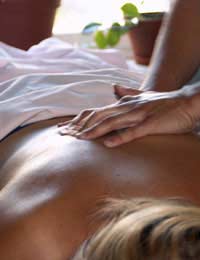The Spine: Non-Skeletal Components

Along with the actual bony parts of the spine, the human skeleton relies on soft-tissue components to add strength, movement and flexibility for everyday function.
Intervertebral Discs
These discs make up one third of the length of the spine and are around half an inch thick. Found sandwiched between the vertebrae they act as shock absorbers and take up the impact on the spine when walking or running; they also prevent the vertebrae from grinding against one another.Containing a soft jelly-like substance called nucleus pulposus, vertebral discs are the largest organ in the human body to not have its on blood supply, as they soak up blood and nutrients on movement.
Facet Joints
These joints link the vertebrae together and are located in the posterior of the spinal column. Each vertebra has 2 sets of facet joints, one pair facing upwards, the other pair facing down. Facet joints aid in the flexibility of the spine and are significant in the prevention of excessive movements.Facet joints are synovial, meaning they each have a capsule of connective tissue surrounding it that provides fluid to lubricate the joint. The joint surfaces are coated with cartilage allowing smooth movement.
Muscles, Tendons and Ligaments
Skeletal muscle is striated in appearance, is under voluntary movement and has the fastest contraction rate of all muscle. Muscle provides strength and balance and can either contract or relax depending on the messages received from nerve impulses that originate in the brain.There are 18 cervical muscles, 5 thoracic and 8 lumbar.
The function of a tendon is to connect muscle to bone, as there are many muscles included in the spinal structures, so too are there numerous tendons.
Ligaments connect bone to bone and provide structural stability to the spine. The human spine possesses two sets of ligaments; the intersegmental and the intrasegmental; each has its own function.
Both ligaments and tendons are made up of tightly packed collagen based fibres that prevent muscles from overly contracting or flexing too tightly.
The Spinal Canal
The term spinal canal is given to the space, or hole, found in the middle of the vertebrae in which the spinal cord passes. The space in-between each vertebrae, where the spinal cord would otherwise be unprotected, is sheathed with intervertebral ligaments.This spinal canal is divided into two layers which are encased by a membrane called the dura-mater; these are the epidural space and the subdural space. The epidural space contains a large number of delicate blood vessels, and the subdural space is filled with cerebrospinal fluid, in which the spinal cord is found.
The Spinal Cord
The spinal cord is part of a human central nervous systems and runs down the centre of the skeletal spine from the brain. It is comprised of millions of nerves that pass messages to and from our brain to other parts of our anatomy such as limbs and organs.The spinal cord actually ends at around the first lumbar vertebra, L1.


Re: Who is at Risk of Developmental Back Pain?
I have been getting muscle spasms in my lower back for 30 years and when they occur I walk like an old man. I…
Re: A Spinal Tap Caused My Back Pain
When I was 14 I was sent to the emergency room with an illness the doctors couldn't identify. Extremely high fever and high…
Re: A Spinal Tap Caused My Back Pain
I've had spinal meningitis 7 times now. So much scar tissue they have to do x ray with the lumbar puncture. I am having a lot…
Re: A Spinal Tap Caused My Back Pain
Hello I had spinal tap done bout 8 month ago due to a brain aneurysm. I tell you someday they way my back is make me not…
Re: A Spinal Tap Caused My Back Pain
So about 7 or 8 months ago I got a spiral tap preformed due to have being diagnosed with Idiopathic intracranial…
Re: A Spinal Tap Caused My Back Pain
So about 7 or 8 months ago I got a spiral tap preformed due to have being diagnosed with Idiopathic intracranial…
Re: Dehydrated Discs
hI THERE, I have Dyhydration L3/l4 and ll4/l5 and disprotrusion and sequestrated discu after MRI i am aged 52. I had hip pain all night for 3…
Re: A Spinal Tap Caused My Back Pain
Hi . I also had a spinal Tap to check the stages of a bleeiding in my brain. This has caused me serious back pain almost…
Re: Dehydrated Discs
Alex - Your Question:I am a 27 yr old male who up until last year was working 84-108 hrs/week and always had back problems but all the doctors I…
Re: Dehydrated Discs
I am a 27 yr old male who up until last year was working 84-108 hrs/week and always had back problems but all the doctors i had seen told me its…